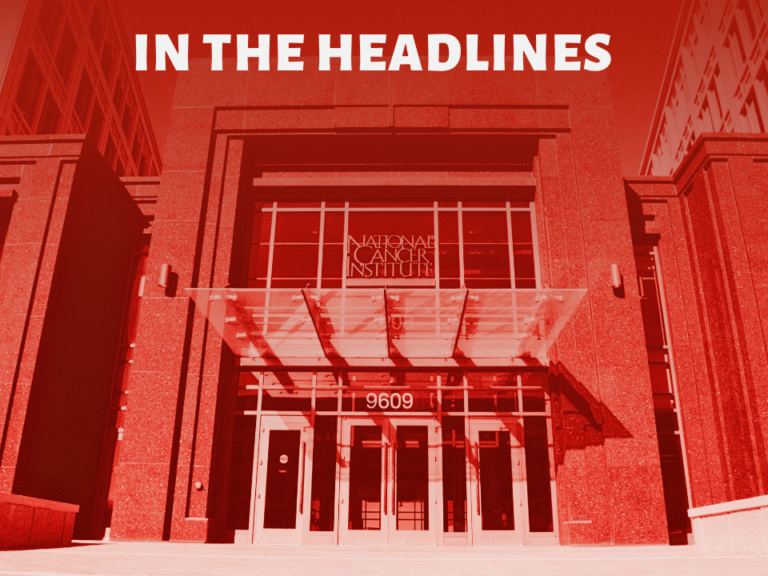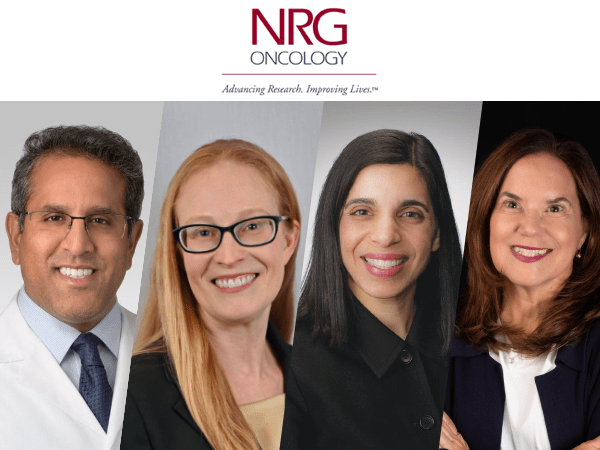In 1971, when the National Cancer Act was signed, J. Palmer Saunders was the director of the Division of Cancer Research, Resources and Centers.
On July 22, 1998 as part of the NCI Oral History Project interviews, he described his work at NCI, his career, and the time he was asked to investigate NCI’s Chemotherapy Program due to political pressure.
Spotlight article: J. Palmer Saunders on reviewing NCI’s Chemotherapy Program


- NCI Oral History Project interview with J. Palmer Saunders, M.D.
By National Cancer Institute | July 22, 1998
NIH Director Jim Shannon asked Saunders to lead a committee to investigate the Chemotherapy Program in the late 1960s. At the time, Saunders was a deputy under Gordon Zubrod, who was head of the Division of Cancer Treatment in 1956 and Scientific Director in 1961.
Zubrod was also head of the Chemotherapy Program at the time Saunders was asked to review it.
“One of the congressmen, whose name I have forgotten—maybe he should be nameless—got very upset about the money that the Cancer Institute was spending,” Saunders said. “And he decided that the Cancer Chemotherapy Program was one of the big offenders in spending money.”
Saunders, executive secretary of the review committee, conducted the review—which took around six months.
“We found it wasn’t a bad program. There were some problems with it, some deficiencies, especially in terms of review-that was the one thing we hit on. And we wrote the report,” he said.
The report was approved by the committee, but NIH director Shannon remained unsatisfied.
“[Shannon] thought the Chemotherapy Program needed more change. He seemed to be quite opposed to it,” Saunders said. “After I presented that to Dr. Shannon, it was put on the shelf. He didn’t like the report, so it never saw the light of day.”
The report, Saunders said, demonstrated that the Chemotherapy Program was doing “a fairly good job.”
“They weren’t very happy with the report that said it was a pretty good program. Nevertheless, it stuck,” Saunders said. “I know there were a lot of criticisms. It wasn’t a whitewash by any means.”
“Of course, the NCI was very happy because, while they recognized the Chemotherapy Program needed a lot of work, it was really a mainstay of the development of new cancer drugs,” he said.
Read the full oral history interview here.
Recent contributions from Fox Chase Cancer Center


- Science at the Sea
By Fox Chase Cancer Center | Jan. 3, 2023
Early Outpost Looked to Marine Life for Clues to Cancer Growth
In Fox Chase Cancer Center’s formative years, the researchers who helped chart the center’s scientific course reached far beyond Philadelphia to start a tradition of pioneering investigation into cancer’s origins.
In 1930, Stanley P. Reimann, founding director of the Lankenau Hospital Research Institute—a precursor of the Institute for Cancer Research that would form the scientific arm of Fox Chase— financed the construction of a one-room laboratory in North Truro, MA, with a $1,000 gift from his father-in-law.
Perched on a bluff overlooking the Cape Cod Bay, the Marine Experimental Station operated under the direction of Frederick S. Hammett, the institute’s first scientific director and a “high-spirited man full of interesting ideas,” according to a 1975 journal article by Temple University physician Fred B. Rogers. The laboratory’s mission: to investigate the biological basis of cancer.


- The Study That Launched 50,000 Papers (and Counting)
By Fox Chase Cancer Center | Jan. 4, 2023
October 2016 marked the 25th anniversary of a landmark study that originated in a laboratory at Fox Chase Cancer Center.
The study, “A Retroviral Oncogene, AKT, Encoding a Serine-Threonine Kinase Containing an SH2-Like Region,” is considered the starting point for a plethora of research that significantly impacted the field of cancer.
Fox Chase researchers Philip Tsichlis, MD, (now at Ohio State University), Joseph R. Testa, PhD, and Alfonso Bellacosa, MD, PhD, studied the differences in a protein, known as AKT, that originated from human instead of viral DNA. Although that work would take about a day with modern facilities, the comparison of human and viral sequences took months of effort 25 years ago. The work paid off when the researchers obtained the results of their analysis.
The study revealed that although the viral and human genetic sequences coding for the AKT protein were similar, there were some important differences in the viral sequence that made the protein for which it coded continuously active, and it gave the cell better survival ability.
The reason this finding was so significant is that the AKT protein is important in shutting down the process that kills abnormal cancer cells. Because viral-derived AKT is continuously active and the human form is not, the scientists realized there must be an additional factor that activates it. Once activated, AKT appeared to be extremely important in tumor formation.
“When the AKT protein is activated, cancer cells can survive, proliferate faster, and invade more. It was also found that AKT can regulate angiogenesis (growth of new blood vessels that make a tumor grow),” said Testa, a professor in the Cancer Signaling and Epigenetics research program and the Carol & Kenneth E. Weg Chair in Human Genetics at Fox Chase. “It turned out that AKT is involved in so many aspects of cancer. It is indeed a central player.”
Nixon National Cancer Conference


- Video: Nixon National Cancer Conference 2022: Examining cancer research breakthroughs through a patient-centric lens
By Richard Nixon Foundation | Jan. 5, 2023
On Dec. 7 and 8, 2022, noted clinicians, researchers, journalists, NCI-designated cancer center directors, patients, patient advocates, ethicists, medical professionals and public health officials gathered for the second annual Nixon National Cancer Conference at the Richard Nixon Presidential Library in Yorba Linda, CA.
The inaugural Nixon National Cancer Conference was held on Dec. 2, 2021.
The 2022 conference emphasized a patient-centric and problem-centric approach to cancer care, focusing on the areas where cancer research is leading to breakthroughs across the medical spectrum.
The NNCC opened with a dinner sponsored by City of Hope Orange County and a video highlighting President Nixon’s advocacy of—and signature on—the National Cancer Act of 1971. The Nixon family was represented at the NNCC by Melanie Eisenhower, a child life specialist at the Cancer Center at Children’s Hospital of Philadelphia and the youngest granddaughter of President Nixon.
Nixon Foundation President & CEO Jim Byron announced that the Richard Nixon Foundation has established the Andrew von Eschenbach Award, a new annual award that will be given to an individual whose work has contributed to advances in research and treatment that has relieved suffering and prolonged and saved lives and whose vision continues to inspire.
The first recipient will be selected next year. Marlene Malek, vice chair of Friends of Cancer Research, joined Dr. von Eschenbach on stage for the announcement, which included the gift to Dr. von Eschenbach of an American flag that flew over President Nixon’s Birthplace.
This column features the latest posts to the Cancer History Project by our growing list of contributors.
The Cancer History Project is a free, web-based, collaborative resource intended to mark the 50th anniversary of the National Cancer Act and designed to continue in perpetuity. The objective is to assemble a robust collection of historical documents and make them freely available.
Access to the Cancer History Project is open to the public at CancerHistoryProject.com. You can also follow us on Twitter at @CancerHistProj, or follow our podcast.
Is your institution a contributor to the Cancer History Project? Eligible institutions include cancer centers, advocacy groups, professional societies, pharmaceutical companies, and key organizations in oncology.
To apply to become a contributor, please contact admin@cancerhistoryproject.com.









